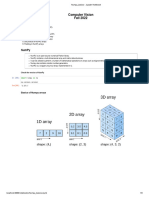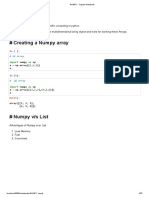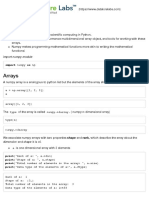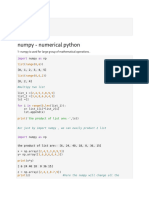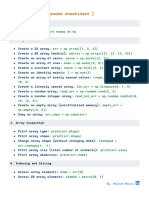0% found this document useful (0 votes)
34 views7 pages#The Numpy Array 20240306 131018 0000
This document discusses NumPy arrays including their data types, sizes, shapes, dimensions, creation of arrays filled with zeros, ones, specified values, ranges of values, evenly spaced values, identity and eye matrices, indexing, slicing, reshaping, stacking, and element-wise and reduction operations.
Uploaded by
burnerpocoCopyright
© © All Rights Reserved
We take content rights seriously. If you suspect this is your content, claim it here.
Available Formats
Download as PDF, TXT or read online on Scribd
0% found this document useful (0 votes)
34 views7 pages#The Numpy Array 20240306 131018 0000
This document discusses NumPy arrays including their data types, sizes, shapes, dimensions, creation of arrays filled with zeros, ones, specified values, ranges of values, evenly spaced values, identity and eye matrices, indexing, slicing, reshaping, stacking, and element-wise and reduction operations.
Uploaded by
burnerpocoCopyright
© © All Rights Reserved
We take content rights seriously. If you suspect this is your content, claim it here.
Available Formats
Download as PDF, TXT or read online on Scribd
/ 7


















